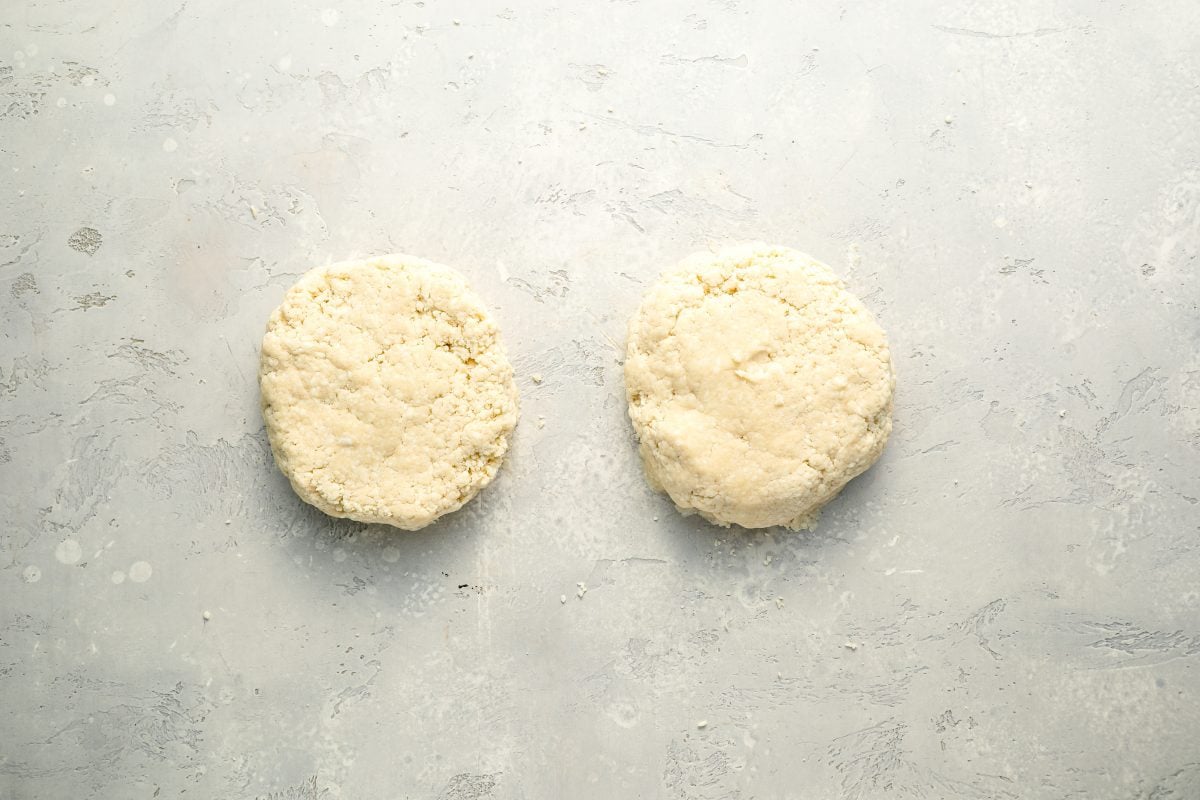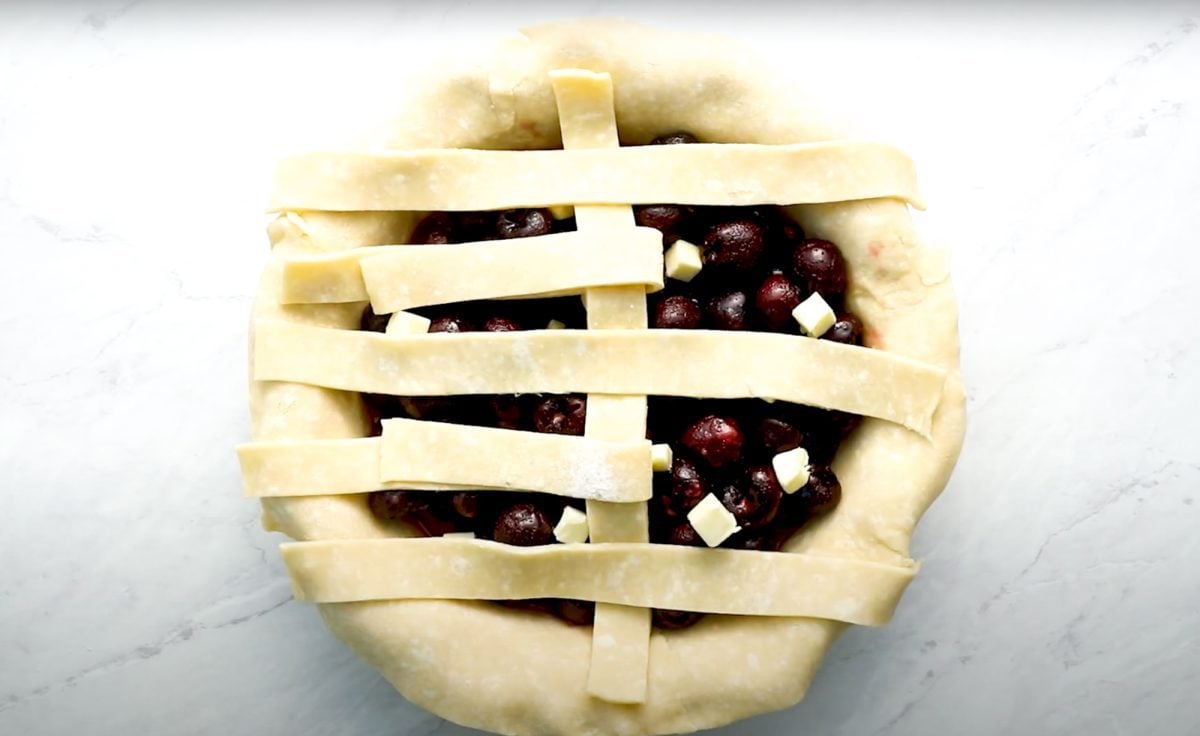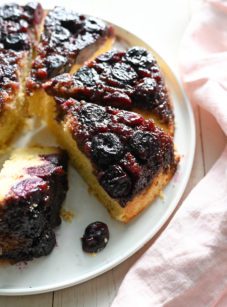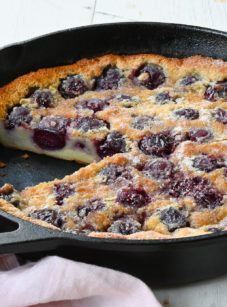Cherry Pie
This post may contain affiliate links. Read my full disclosure policy.
Create a timeless dessert with homemade cherry pie, where juicy cherries meet a perfectly baked, golden lattice crust. Serve it with a scoop of vanilla ice cream for the ultimate summer treat.

This cherry pie with a golden lattice crust is a true taste of summer. The crust is my go-to all-butter pie crust recipe, perfect for any double-crust pie, and the filling is adapted from pastry chef Stella Parks’ cherry pie recipe. A hint of almond extract highlights the cherry flavor, while tapioca flour ensures a beautifully set filling. Just like with my similar blueberry pie, patience is key—cook it until the center is bubbling and let it cool completely before slicing. Serve it with vanilla ice cream or whipped cream for a nostalgic, delicious finish to any summer meal.
What You’ll Need To Make Cherry Pie

- All-Purpose Flour: Provides the essential structure and stability needed for the crust. Measure by spooning it into the measuring cup and leveling it off to ensure accuracy.
- Granulated Sugar: Adds a touch of sweetness to the crust and balances out any potential tartness of the cherries in the filling.
- Baking Powder: Helps to slightly leaven the crust, making it lighter and flakier.
- Butter: Provides richness and flakiness to the crust and adds flavor when dotted over the cherry filling.
- Ice Cold Water: Binds the dough together. The temperature of the water helps keep the butter cold. This ensures the crust will come out flaky and tender.
- Cherries: I prefer to use fresh, in-season cherries for the best flavor—typically sweet or Bing cherries, which are at their peak in the summer and known for their large size, deep red to purplish-black color. I don’t recommend sour cherries. If fresh cherries aren’t available, frozen cherries work well too; no need to thaw them but count on 10 to 15 minutes longer in the oven.
- Lemon Juice: Adds brightness, complementing the sweetness of the cherries and enhancing their flavor.
- Almond Extract: Adds a subtle nutty flavor that pairs nicely with the cherries.
- Tapioca Flour: Thickens the cherry filling, ensuring it sets properly without becoming runny. It is often preferred over cornstarch in pie fillings because it creates a clearer, more glossy finish and provides a smoother, silkier texture. Additionally, tapioca flour holds up better when pies are frozen and thawed.
- Jump to the printable recipe for precise measurements
Step-By-Step Instructions
Step 1: Prepare the Homemade Pie Crust
Combine the flour, sugar, salt, and baking powder in the bowl of a food processor fitted with the metal blade. Pulse a few times to combine.

Add the butter cubes.

Pulse until the mixture is crumbly with lots of pea-size clumps of butter within.

Add the water and pulse until the mixture is evenly moistened and very crumbly.

Dump the dough crumbles onto a work surface and divide into two even piles.

Make two balls of dough and pat each one into a 5-inch disc. Wrap the discs in plastic and refrigerate for at least 45 minutes and up to 3 days.

Step 2: Prepare the Cherry Pie Filling
In a large bowl, combine the cherries, lemon juice, almond extract, sugar, salt, and tapioca flour. Toss until combined; don’t worry if the mixture is powdery.

Preheat the oven to 425°F and set an oven rack in the lower third position. Line a baking sheet with aluminum foil (the foil will catch the juices that bubble over from the pie, making for easy clean up).
Prepare the Bottom Crust
Remove one disc of dough from the fridge. Lightly dust a clean work surface with flour and place the dough on it; sprinkle a bit of flour over the dough as well. Gently knead the dough with your hands just until it becomes soft and malleable (avoid overworking it—you want it just supple enough to roll out). Roll the dough out into a 13-inch circle, adding more flour as needed to prevent sticking.

Carefully lift the dough by draping it over your rolling pin and transfer it to a 9-inch deep-dish pie plate (it should be 2 inches deep).

Gently press the dough into the pan, making sure to ease it into place without stretching. Trim the edges of the dough to extend about ½ inch beyond the pie pan’s lip.

Step 4: Fill the Pie
Transfer the filling into the crust and press into an even layer (do not mound).

Dot the cherries with the butter cubes. Refrigerate while you prepare the top crust.

Step 5: Prepare the Lattice Top Crust
Remove the top disc of dough from the refrigerator and roll it out into a 10×15-inch rectangle, following the same process described earlier.

Using a pizza or pastry cutter, trim the edges and then cut the dough into 14 one-inch-wide strips.

Retrieve the filled pie from the refrigerator. Lay half of the strips horizontally over the pie filling, leaving about 1/2 inch of space between each strip.

Fold back every other strip halfway over itself.

Place one strip of dough vertically over the unfolded strips.

Unfold the folded strips over the new strip, then fold back the alternating strips that were previously left unfolded.

Lay another strip of dough parallel to the first vertical strip, about 1/2 inch away from it.

Repeat the process.

Continue folding back the strips as necessary, until the lattice crust covers the entire pie.

Trim any excess dough from the edges of the lattice strips, leaving a slight overhang.

Fold the edges of the bottom crust over the lattice strips. Then crimp or flute the edges to seal the pie.

Place the pie on the lined baking sheet and bake at 425°F for 20 minutes. Reduce the oven temperature to 375°F and continue baking for an additional 60 to 70 minutes, or until the crust is golden brown and the filling is bubbling both on the edges and in the center (if you have a digital thermometer, it should be at least 213°F in the center). Keep an eye on the pie during the second half of baking and tent lightly with foil if it’s getting too brown on top (I usually tent it at the 40-minute mark in the second phase).

Make-Ahead Instructions
Once cooled, you can keep the pie at room temperature for up to 2 days, covering it loosely with foil to prevent it from drying out. If you need to store the pie for longer than 2 days, place it in the refrigerator, covered with plastic wrap or aluminum foil, and store for up to 4 days. You can make the crust up to 3 days ahead and store it in the refrigerator.
Freezing Instructions
The unbaked cherry pie can be frozen for up to 3 months. Simply prepare and assemble the pie without baking. Before wrapping, chill the pie in the refrigerator until it is cold and firm. Then, wrap the unbaked pie tightly in plastic wrap to ensure it’s well-sealed, and wrap it again in aluminum foil for extra protection. When you’re ready to bake the pie, thaw it in the refrigerator overnight before baking. You can also freeze the crust for up to 3 months; thaw overnight in the refrigerator before using.
Video Tutorial

You May Also Like
Cherry Pie
Ingredients
For the Crust
- 3 cups all-purpose flour spooned into measuring cup and leveled-off
- 3 tablespoons sugar
- 1 teaspoon salt
- ¼ teaspoon baking powder
- 2½ sticks (20 tablespoons) cold unsalted butter, sliced into 1-inch pieces
- ½ cup ice cold water
For the Filling
- 5¼ cups pitted cherries, from about 2 lbs (6 cups) whole cherries, fresh or frozen (if frozen, no need to thaw)
- 2 tablespoons lemon juice
- ¼ teaspoon almond extract
- ¾ cup + 2 tablespoons sugar
- ¼ teaspoon salt
- ⅓ cup tapioca flour (also called tapioca starch), such as Bob’s Red Mill
- 2 tablespoons unsalted butter, cut into small cubes
Instructions
Prepare the Crust
- If using a food processor: Combine the flour, sugar, salt, and baking powder in the bowl of a food processor fitted with the metal blade. Pulse a few times to combine. Add the pieces of butter and pulse until the mixture is crumbly with lots of pea-size clumps of butter within. Add the water and pulse until the mixture is evenly moistened and very crumbly. Dump the dough crumbles onto a work surface and divide into two even piles. Make two balls of dough and pat each one into a 5-inch disc. Wrap the discs in plastic and refrigerate for at least 45 minutes and up to 3 days.
- If making by hand: In a large mixing bowl, whisk together the flour, sugar, salt, and baking powder. Add the butter cubes and use a pastry cutter or two knives to cut the butter into the dry ingredients until the mixture resembles coarse crumbs. Gradually add the ice water, mixing with a fork, and then your hands until the dough comes together into a ball. Divide the dough in half, shape into disks, wrap in plastic wrap, and refrigerate for at least 45 minutes and up to 3 days.
Prepare the Filling
- In a large bowl, combine the cherries, lemon juice, almond extract, sugar, salt, and tapioca flour. Toss until combined; don’t worry if the mixture is powdery.
- Preheat the Oven: Preheat the oven to 425°F and set an oven rack in the lower third position. Line a baking sheet with aluminum foil (the foil will catch the juices that bubble over from the pie, making for easy clean up).
Prepare the Bottom Crust
- Remove one disc of dough from the refrigerator. Lightly dust a clean work surface with flour and place the dough on it; sprinkle a bit of flour over the dough as well. Gently knead the dough with your hands just until it becomes soft and malleable (avoid overworking it—you want it just supple enough to roll out). Roll the dough out into a 14-inch circle, adding more flour as needed to prevent sticking. Carefully lift the dough by draping it over your rolling pin and transfer it to a 9-inch deep-dish pie pan (it should be 2 inches deep). Gently press the dough into the pan, making sure to ease it into place without stretching. Trim the edges of the dough to extend about ½ inch beyond the pie pan's lip.
Fill the Pie
- Transfer the filling into the crust and press into an even layer (do not mound). Dot the cherries with the butter. Refrigerate while you prepare the top crust.
Prepare the Lattice Top Crust
- Remove the top disc of dough from the refrigerator and roll it out into a 10x15-inch rectangle, following the same process described earlier. Using a pizza or pastry cutter, trim the edges and cut the dough into 14 one-inch-wide strips. Retrieve the filled pie from the refrigerator. Lay half of the strips horizontally over the pie filling, leaving about 1/2 inch of space between each strip. Fold back every other strip halfway over itself. Place one strip of dough vertically over the unfolded strips. Unfold the folded strips over the new strip, then fold back the alternating strips that were previously left unfolded. Lay another strip of dough parallel to the first vertical strip, about 1/2 inch away from it. Repeat the process, folding back the strips as necessary, until the lattice crust covers the entire pie. Trim any excess dough from the edges of the lattice strips, leaving a slight overhang. Fold the edges of the bottom crust over the lattice strips, then crimp or flute the edges to seal the pie.
Bake
- Place the pie on the lined baking sheet and bake at 425°F for 20 minutes. Reduce the oven temperature to 375°F and continue baking for an additional 60 to 70 minutes, or until the crust is golden brown and the filling is bubbling both on the edges and in the center (if you have a digital thermometer, it should be at least 213°F in the center). Keep an eye on the pie during the second half of baking and tent lightly with foil if it’s getting too brown on top (I usually tent it at the 40-minute mark in the second phase).
- Immediately move the hot pie off the foil and place on a heat-proof surface. If necessary, take a wad of wet paper towels and wipe any cherry juice from the edges (it gets extremely sticky as it dries). Let the pie cool completely before slicing, at least 8 hours or overnight (if you have a digital thermometer, it should be 78°F or lower in the center before slicing). Resist the temptation to cut into the pie while it’s even slightly warm, or you will end up with cherry soup!
- Once cooled, you can keep the pie at room temperature for up to 2 days, covering it loosely with foil to prevent it from drying out. If you need to store the pie for longer than 2 days, place it in the refrigerator, covered with plastic wrap or aluminum foil, and store for up to 4 days.
Notes
- It’s normal for the cherry juices to bubble out of the pan towards the end.
- The cooking time will depend on the type of pan you use and whether you use frozen cherries (count on an extra 10 to 15 minutes if using frozen).
- It is critical that the pie is boiling in the middle or reaches 213°F, or it will not set up properly.
- Don’t be tempted to reduce the sugar—it is needed for the pie to set.
Nutrition Information
This website is written and produced for informational purposes only. I am not a certified nutritionist and the nutritional data on this site has not been evaluated or approved by a nutritionist or the Food and Drug Administration. Nutritional information is offered as a courtesy and should not be construed as a guarantee. The data is calculated through an online nutritional calculator, Edamam.com. Although I do my best to provide accurate nutritional information, these figures should be considered estimates only. Varying factors such as product types or brands purchased, natural fluctuations in fresh produce, and the way ingredients are processed change the effective nutritional information in any given recipe. Furthermore, different online calculators provide different results depending on their own nutrition fact sources and algorithms. To obtain the most accurate nutritional information in a given recipe, you should calculate the nutritional information with the actual ingredients used in your recipe, using your preferred nutrition calculator.






Hi Jenn,
I don’t have tapioca flour, can I substitute regular flour or a mix of flour and corn starch? If yes, how much.
Thank you.
Hi Alison, I recommend sticking with tapioca flour. It creates a clear, glossy finish with a smooth texture that holds up well, even if you freeze the pie. Cornstarch, while effective, can make the filling look cloudy and may become grainy or watery.
YUM, yum, yum! My grocery store had a great sale on cherries, so I decided to give this a go and so happy I did. I’ve never made a lattice crust and was a little intimidated by it, but Jenn’s instructions are perfect. The filling was full of summer flavor and set beautifully. I’m tempted to make this again this weekend before cherries are out of season. Regardless of whether it’s this weekend or next summer, I WILL be making this again — it’s a winner!!
The pie filling is perfect. Only problem is my bottom crust is over baked. Wondering why this pie is baked in the lower third of the oven; I’ll go with typical middle rack baking next time.